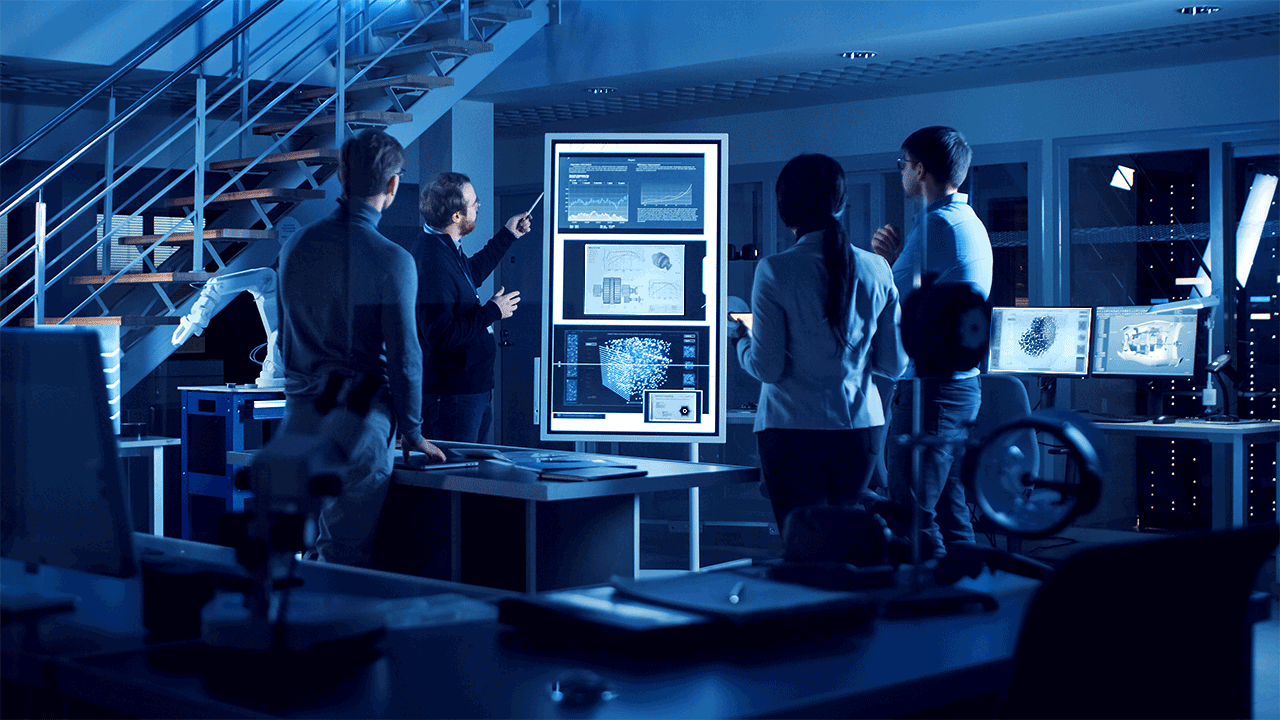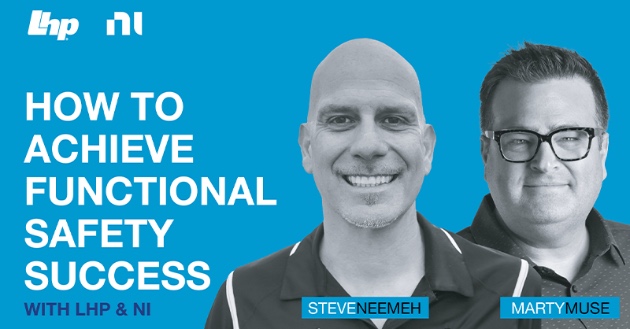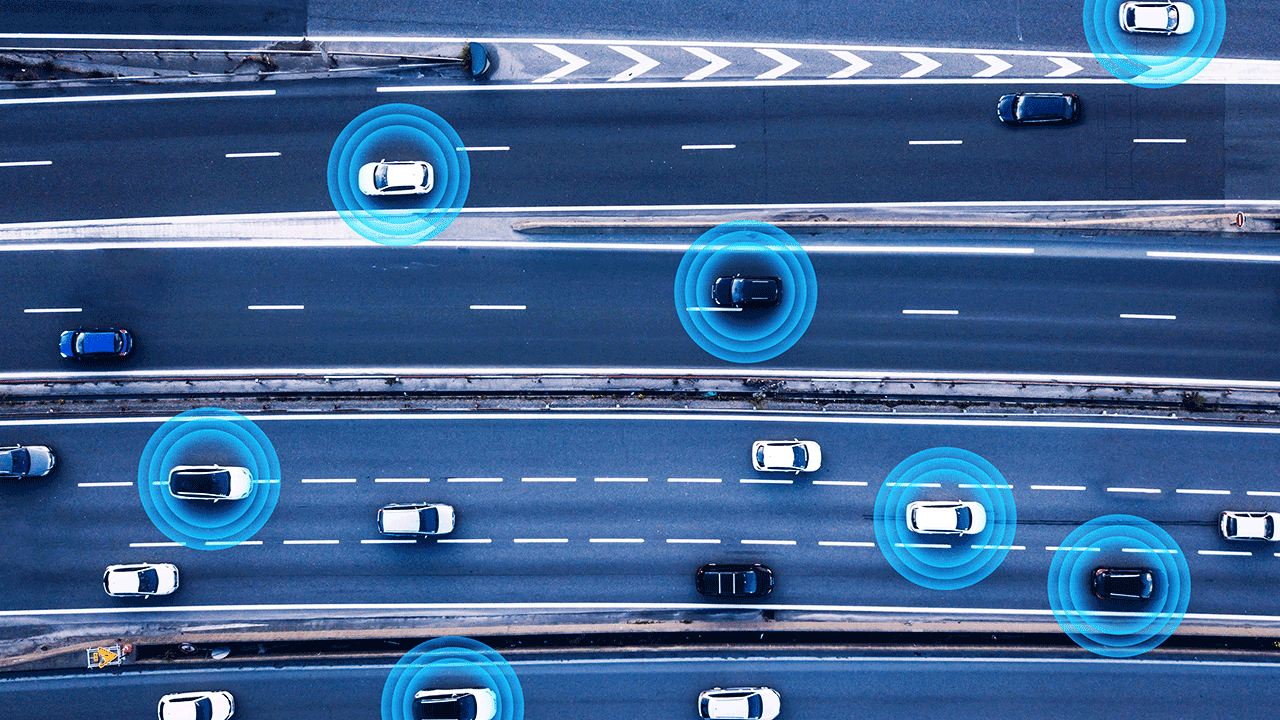SME Interview: How to Achieve Functional Safety Success with LHP and NI
-An Interview with Steve Neemeh From LHP Engineering Solutions
Unlock Engineering Insights: Explore Our Technical Articles Now!
Discover a Wealth of Knowledge – Browse Our eBooks, Whitepapers, and More!
Stay Informed and Inspired – View Our Webinars and Videos Today!
Exploring the future of software-defined vehicles through expert insights.

At LHP Engineering Solutions, we often receive requests from clients or partner companies to help with one individual technology or another, as they make their way through the ISO 26262 certification process. Working on technologies piecemeal in this way can lead to rework whether due to revisions in one component or another, or because the organization hasn’t considered every component part and how all the components work together. The LHP Functional Safety Ecosystem guides clients and partner firms as they holistically address functional safety. We provide the client with expertise in 6 core component areas. This can contribute to significant savings because the need for costly rework is reduced.
Often, our clients have worked on their technologies independently before coming to LHP. When a client realizes they haven’t considered all the pieces of functional safety and how they fit together, they may have to repeat work, which could waste valuable resources including time and money. LHP believes that holistically addressing functional safety by utilizing the Functional Safety Ecosystem is a far more economical use of this effort. Doing so yields better results in less time, bringing your organization to full and robust ISO 26262 compliance. The LHP Functional Safety Ecosystem will help to instill the continual daily practice of performing and practicing functional safety within your organization’s cultureThis places quality foremost at every level of the organization.
Addressing functional safety holistically with the LHP Functional Safety Ecosystem places clients in control of not only their overall ISO 26262 compliance and certification, but also the six critical areas of this innovative model which work to support and strengthen the organization’s functional safety process. This is because these six critical areas reinforce compliance with the ISO functional safety standard in a distinct and unmatched way, by optimizing the organization’s understanding of the functional safety standard, the bedrock on which to build a sound functional safety practice and culture.
Artists and psychologists work with a theory called Gestalt, which says in part that the whole exists as an entity greater than the sum of all its individual parts. The LHP Functional Safety Ecosystem reinforces that the whole cannot function optimally unless each component is fully optimized. They must all be efficiently co-acting, working in sync at their peak.
“These things all have to work together,” says Steve Neemeh, Chief Technology Officer at LHP. “I’ll get a question from a client, saying, ‘I need someone to help me with functional safety.’ Well, functional safety really needs to be a part of your overall process development. Do you have an ISO 9001 team or a Six Sigma team? You really need to include functional safety as a part of those teams.” If your organization is working on developing its AUTOSAR capability, for instance, Steve says, “Don’t have a separate AUTOSAR team, have a team that develops AUTOSAR that’s functional safety compliant.”
Prior to utilizing the LHP Functional Safety Ecosystem, attaining the needed certification may have been an unduly costly enterprise, with the rework of multiple steps, retracing one’s route, and losing excess time and money along the way. The LHP Functional Safety Ecosystem brings organizations to full ISO 26262 compliance with minimal resource loss to inefficiency because we consider the operational requirements of each component within the whole. When all six of these interwoven critical components are optimized, the effectiveness of your organization’s functional safety efforts is greatly increased. ISO 26262 compliance, in turn, can lead to greater product safety, greater consumer trust, and an increased share of the market.
The ISO 26262:2018 standard is an adaptation of an earlier set of standards,
“…to address the sector-specific needs of electrical and/or electronic (E/E) systems within road vehicles…Safety is one of the key issues in the development of road vehicles. Development and integration of automotive functionalities strengthen the need for functional safety and the need to provide evidence that functional safety objectives are satisfied.”
The LHP Functional Safety Ecosystem advisory model helps organizations to reduce manual procedures. This helps reduce human error, greatly strengthening the overall quality of the product. As a result, overall safety, functional safety, and quality control efforts produce a greater degree of market advantage.
As a design philosophy, functional safety optimizes and reinforces robust systems engineering methods to apply these good practices more stringently. What ISO 26262 does mandate is for safety considerations to be systematically addressed throughout the development cycle of any device, program, or system.
ISO 26262 essentially says that functional safety must itself be holistically woven into every part, step, and component of the design lifecycle of electrical or electronic (E/E) systems. Functional safety needs to be the lifeblood of E/E systems and software-defined vehicles, because functional safety is the best way forward in this new landscape of increasingly complex software-defined vehicles.
The LHP Functional Safety Ecosystem is a self-contained six-part masterclass in holistic integration. It’s tailor-made to assist suppliers and manufacturers involved in the software-defined vehicle industry. Again, LHP Chief Technology Officer Steve Neemeh:
“We can address all of those (6 critical areas of the LHP Functional Safety Ecosystem) in a holistic solution and that solution will be custom for each client’s individual environment – not cookie cutter, but customized, tailored solutions for the entire advisory model at each client’s environment.”
We offer experts in all six critical areas to help you go “from start to certified” in ISO 26262. Here are the six pieces of the LHP Functional Safety Ecosystem and how they integrate holistically with one another, as well as into ISO 26262 compliance for your organization.
The experts in the LHP Functional Safety Ecosystem begin by asking, “What are the gaps in the current ISO 26262 compliance situation?” This assessment of the holistic needs of the entire organization, through knowledge of all six of the key components, leads to the collaborative building of training and action plans. Engineers will have a definite road map to follow along the path to certification.
When viewed as a whole, the ISO 26262 standard presents many challenges. Hence, there can be gaps in a company’s compliance. A competent guide conveys engineers and leaders through those challenges; the LHP Functional Safety Ecosystem is a way to surmount these difficulties by addressing the core components first discretely, and then as consolidated into ISO 26262 compliance. The holistic outlook allows you to find knowledge past any mystery the standards might hold, and help your organization to make functional safety into a practical daily discipline. LHP’s Functional Safety Ecosystem leads your organization into the inner circle of functional safety knowledge.
Comprehending the six key areas of the LHP Functional Safety Ecosystem (Cybersecurity, Standards and Regulations, Test Systems, Model-Based Development, Application Lifecycle Management, and AUTOSAR) is a good way to understand functional safety as a whole. A solid understanding of the functional safety concepts helps organizations understand the way forward to not only attain certification, but to implement a functional safety practice as a permanent fixture in your company’s culture, both now and in the software-defined future.

-An Interview with Steve Neemeh From LHP Engineering Solutions

Why is Safety at the Core of Software-Defined Vehicles? Creating technology can be a complicated and time-consuming process. At LHP Engineering...

Implementing AUTOSAR and Functional Safety